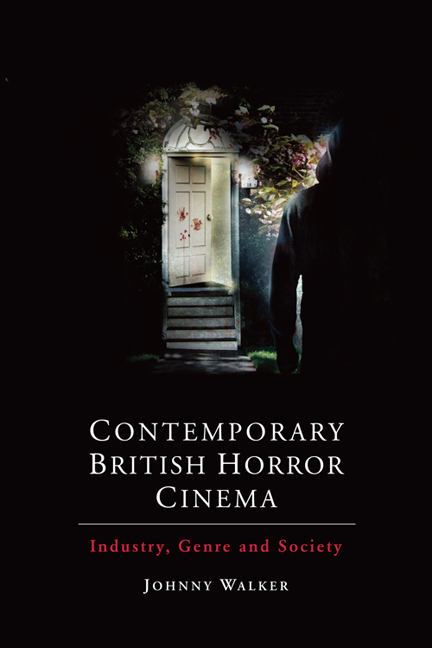6 - Let the quiet ones in
Published online by Cambridge University Press: 05 August 2016
Summary
Since the release of Hammer Films's The Curse of Frankenstein in 1957, the sobriquet ‘Hammer Horror’ has, for many, become synonymous with British horror cinema. Known the world over for its full-colour Gothic horror films ‘set in a dislocated but quintessentially Victorian hinterland’, Hammer enjoyed global box-office success throughout the 1950s and 60s with its ‘distinctive generic style’ (Meikle 2009: xiii). As Denis Meikle notes in A History of Horrors: The Rise and Fall of the House of Hammer, the company ‘would live to take its rightful place second only to Ealing in the ranks of the great postwar British independents, while its legacy continues to be felt’ across popular culture to this very day (ibid.). Indeed, since the 1970s, Hammer's legacy has been shaped by fanzines, books and websites specifically about the company, while film and television continues to pay homage to the ‘Hammer brand’ and its history through documentaries and late-night screenings. This is in spite of Hammer having been largely inactive in the film world since the late 1970s, when it ceased to make features, and, after a brief stint in television during the 1980s, focused mainly on merchandising throughout the 1990s.
As I have explored elsewhere in this book, the centrality of Hammer to discourses around British horror cinema, in light of Pirie's influential ‘heritage of horror’ argument, has meant that other aspects of British horror history have been overshadowed. This meant, for a long time, the sidelining of the output of other notable horror production houses such as Amicus, Tigon and Tyburn (Hunt 1998: 143–7). Yet for all that Hammer offers us merely a limited insight into what may be termed the ‘classic period’ of British horror, Hammer was the only one of its contemporaries to see any kind of successful re-launch in the first fourteen years of the twenty-first century. For, in 2007, ‘Hammer Films’ went back into feature film production. Therefore, while the ‘heritage of horror’ argument does little to aid in any assessment of contemporary British horror cinema's dynamic variety, it is nevertheless appropriate to turn academic attention to Hammer once more, and evaluate it as a company/brand that has had (at the very least, a perceived sense of) economic and cultural value to recent horror film production.
- Type
- Chapter
- Information
- Contemporary British Horror CinemaIndustry, Genre and Society, pp. 109 - 130Publisher: Edinburgh University PressPrint publication year: 2015



